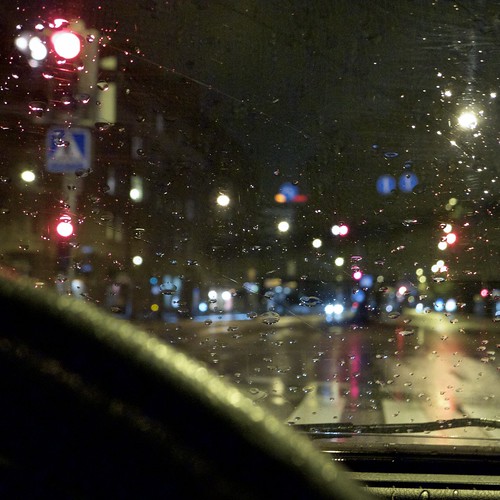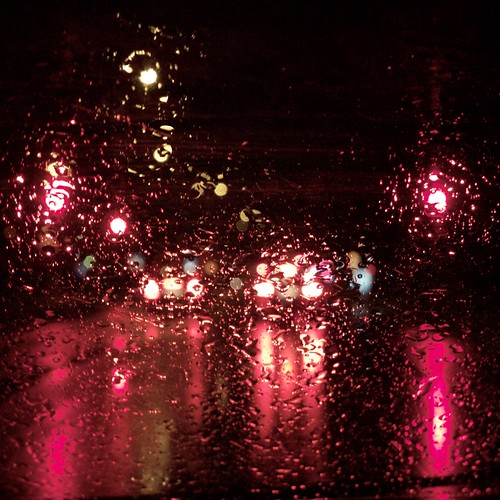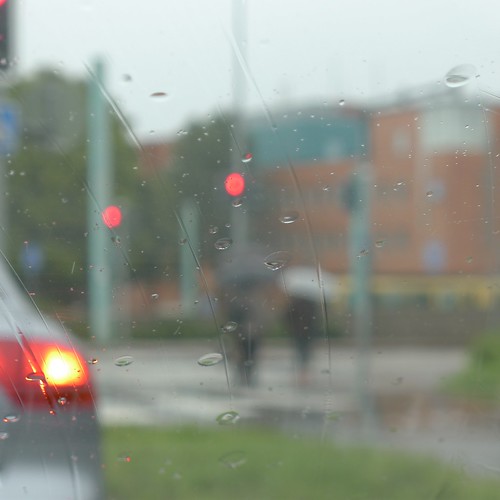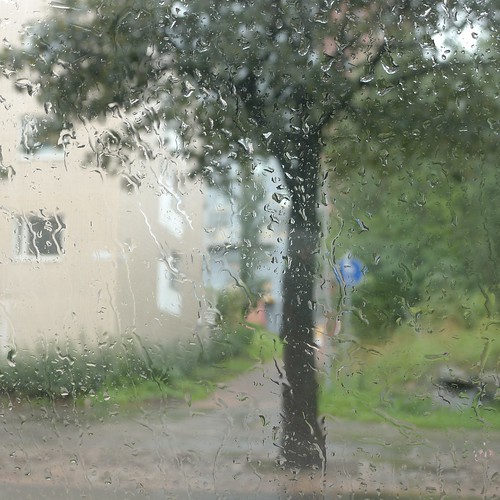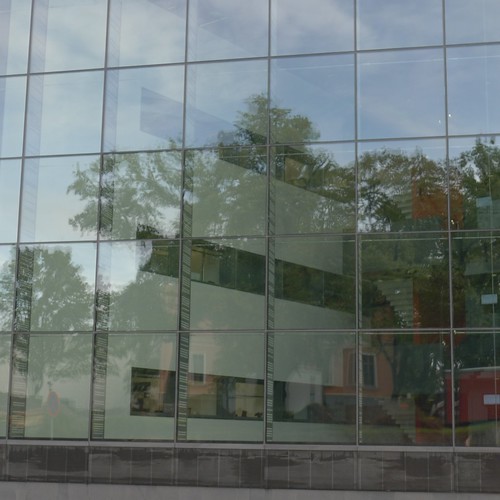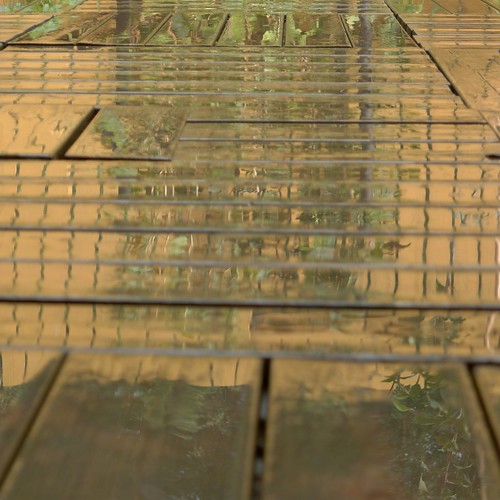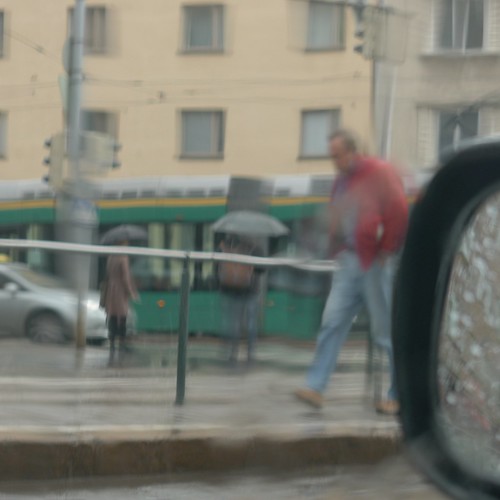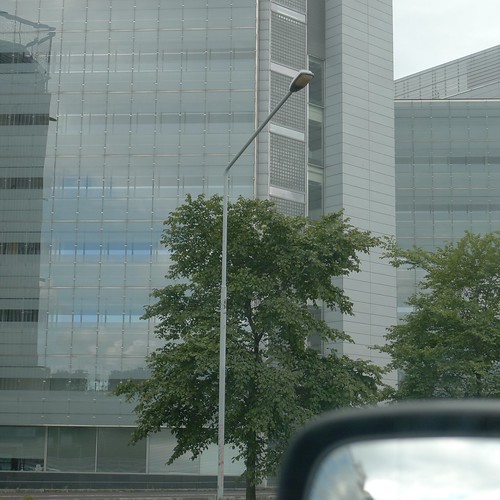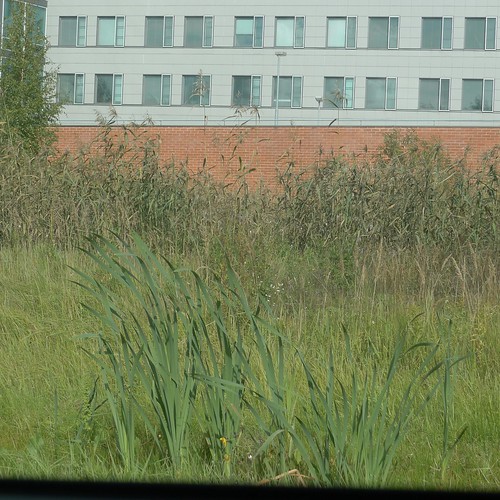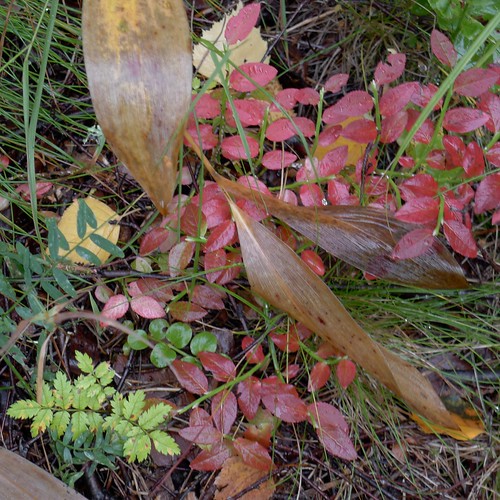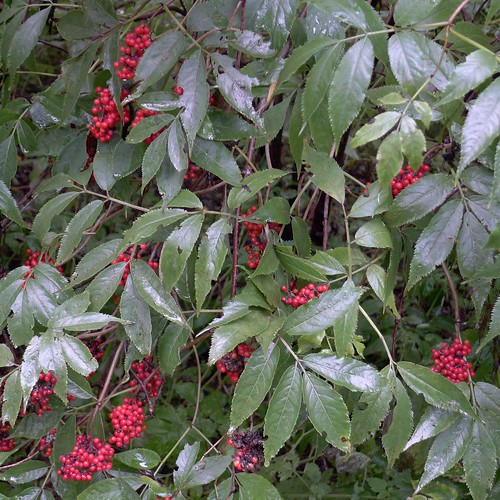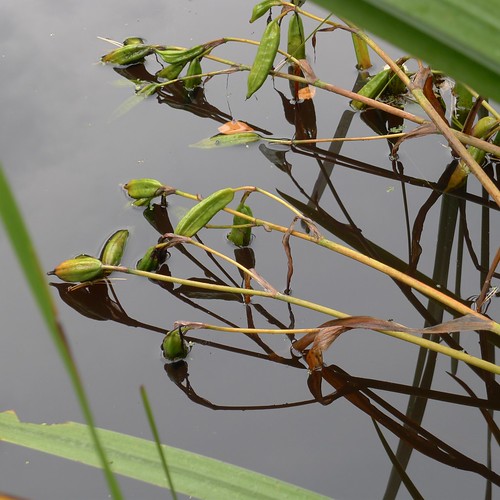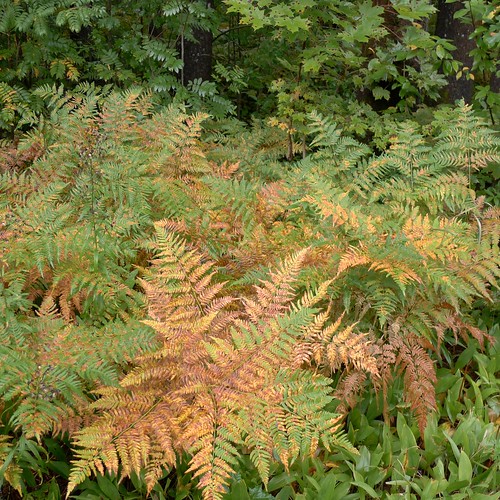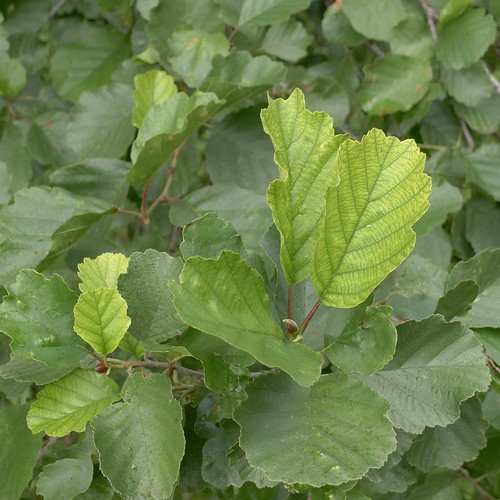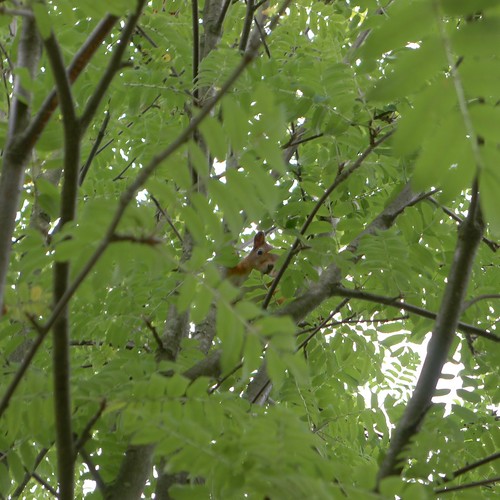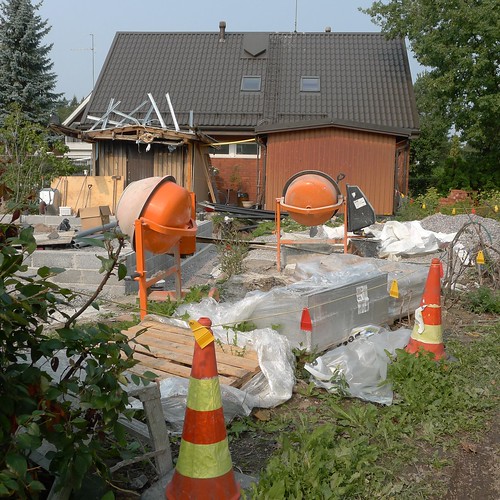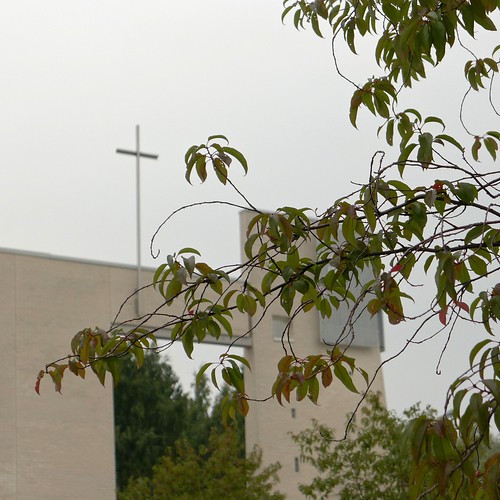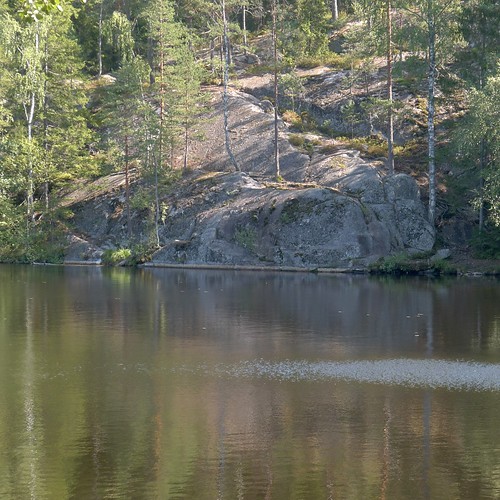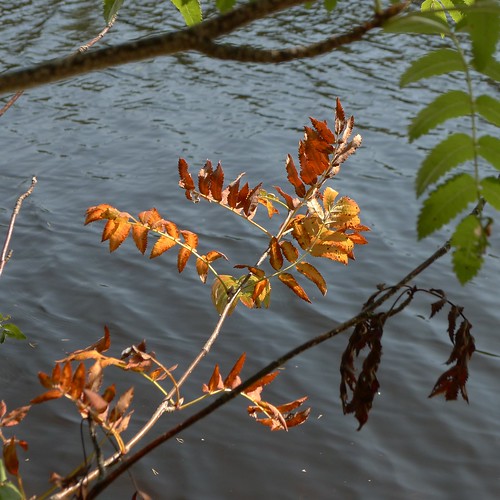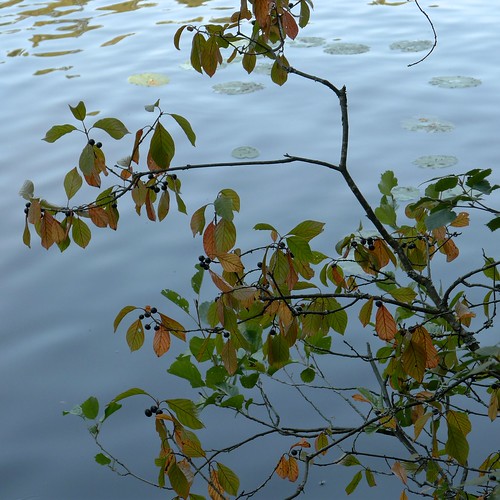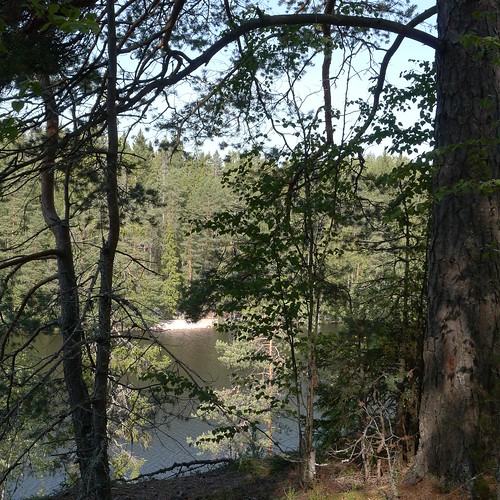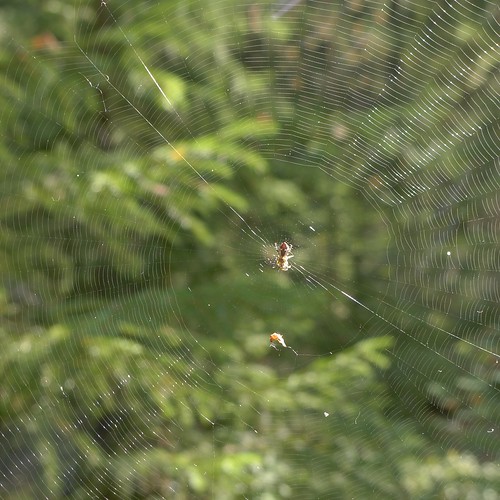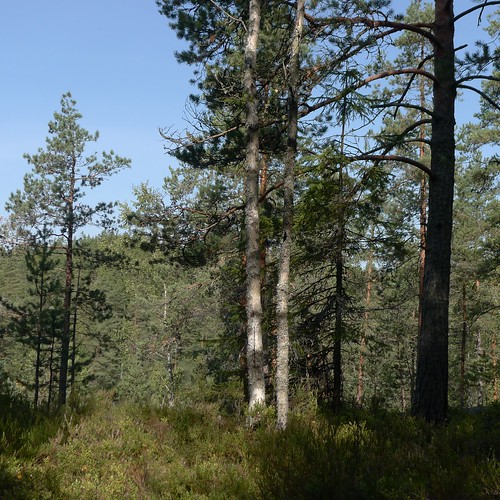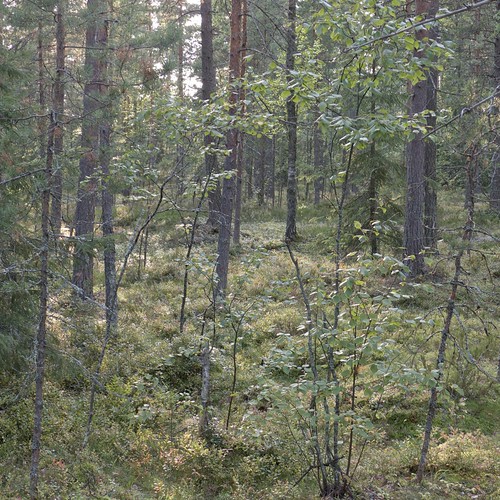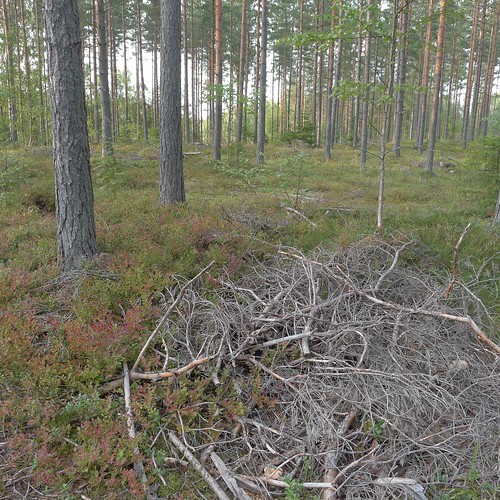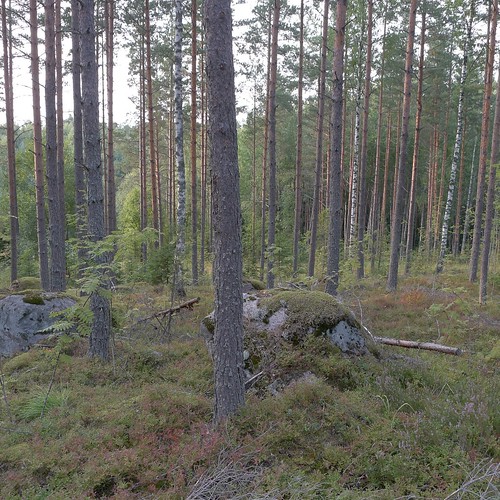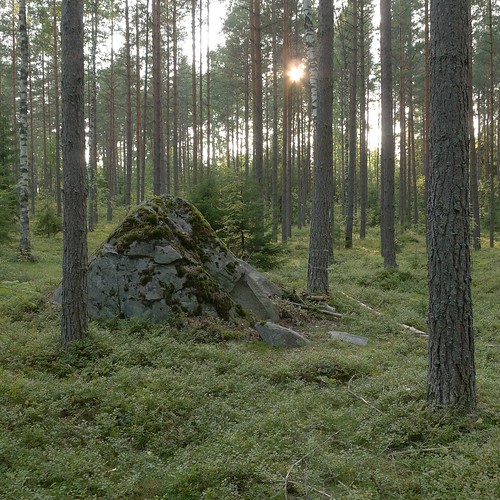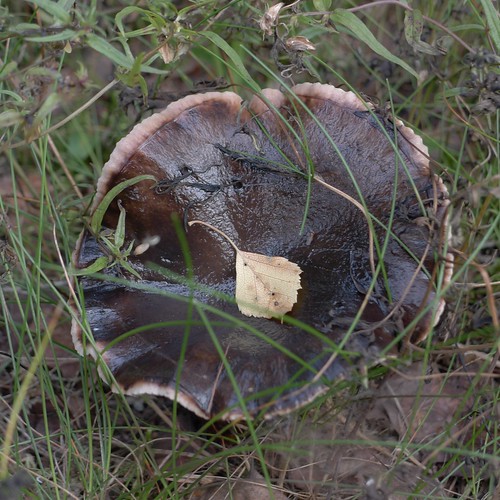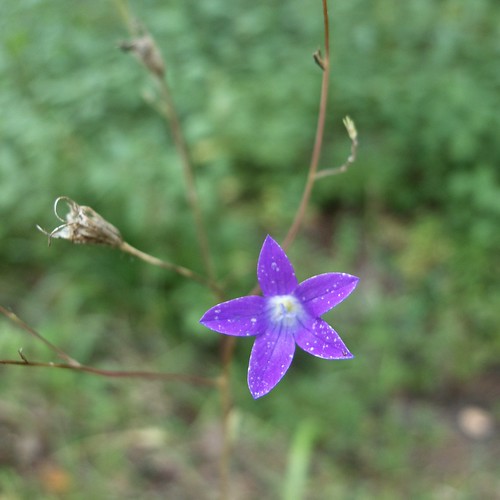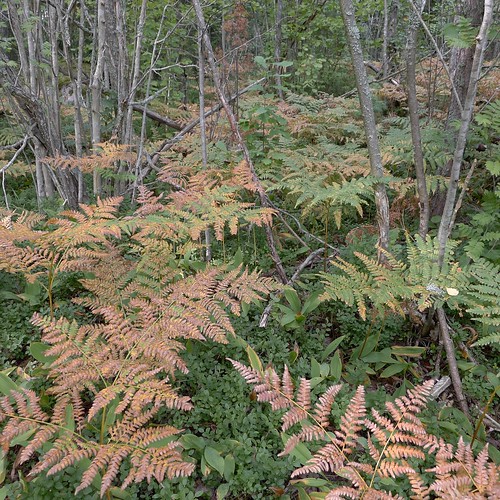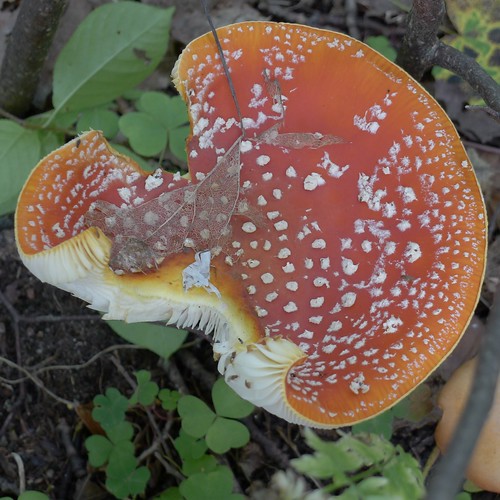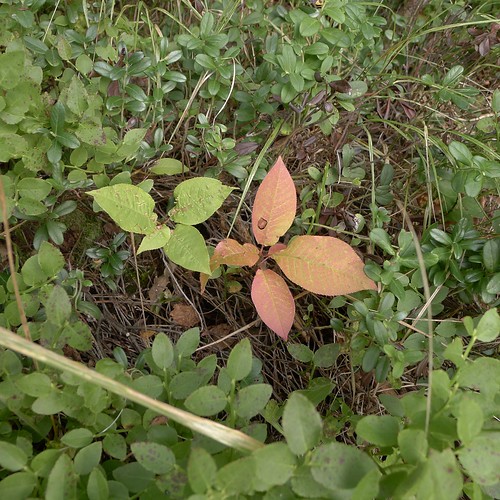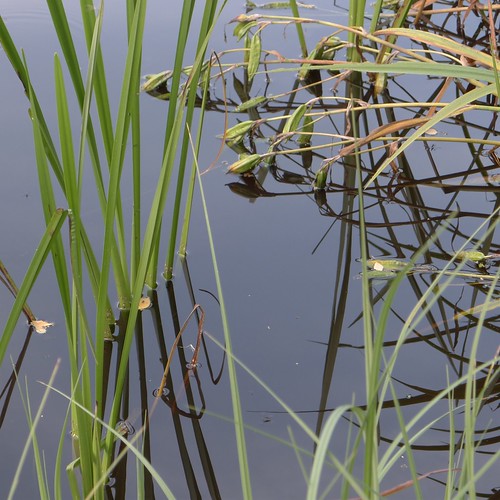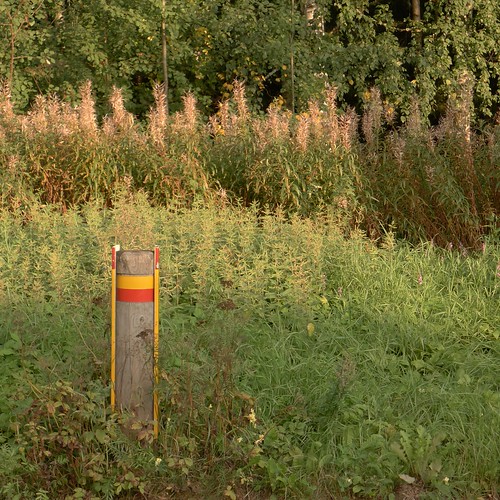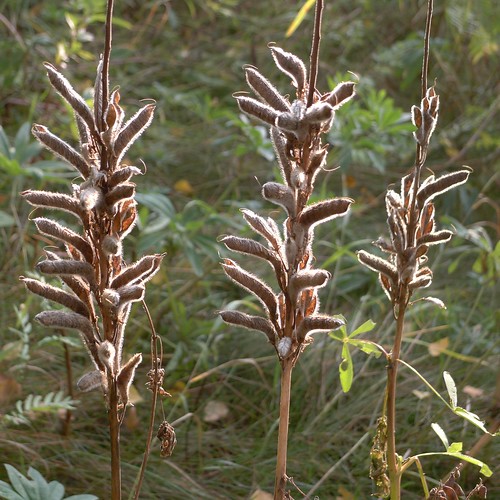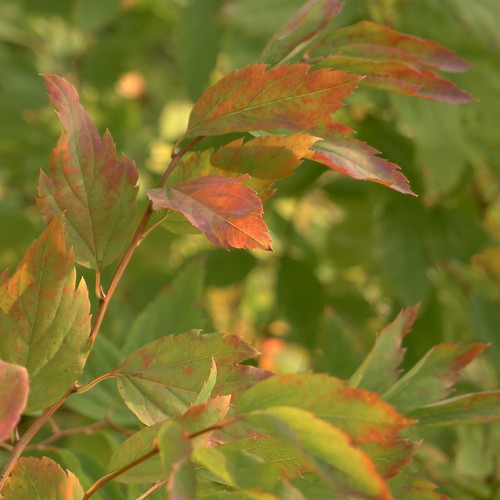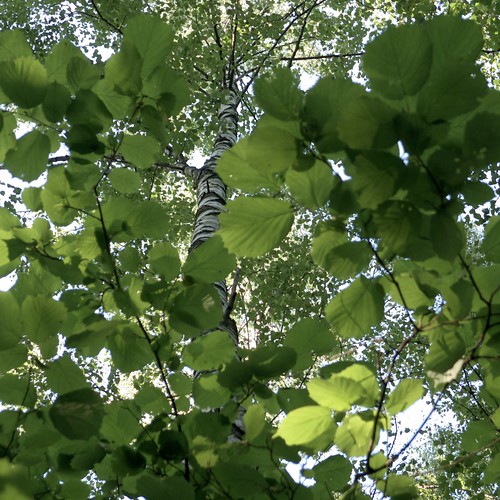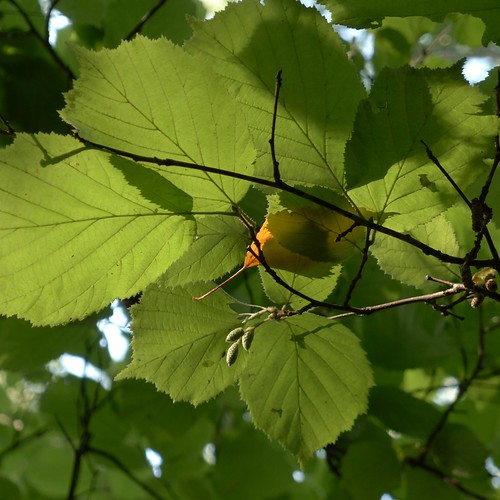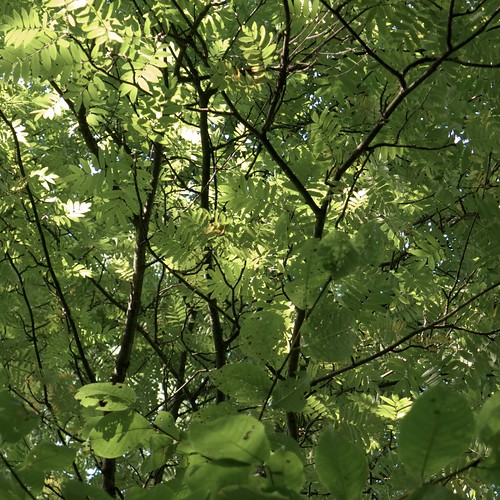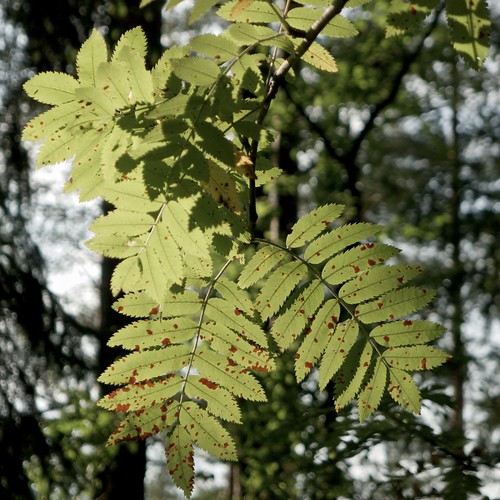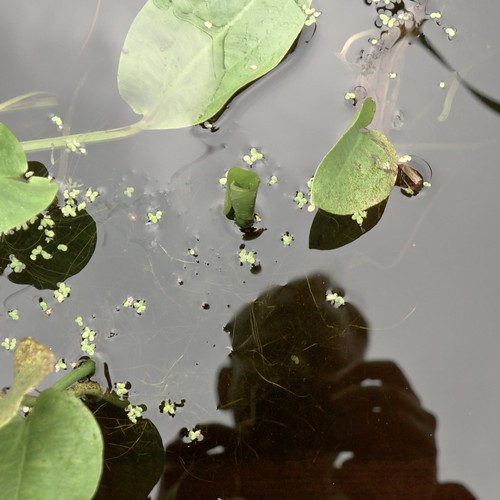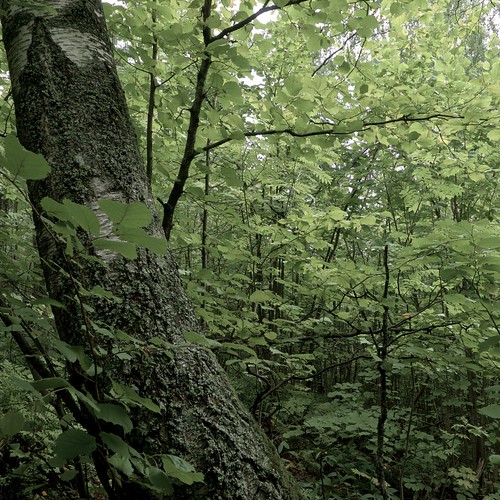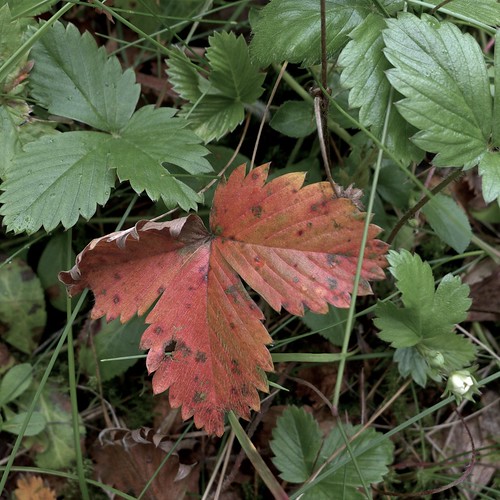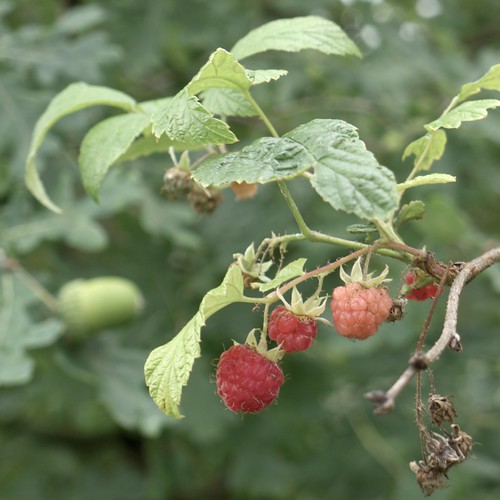I have been sitting in a car all too much this week. And the traffic in Helsinki isn't such a smooth experience, sometimes you get stuck for a long time in the same place.
And it has been raining a lot.
So, here are wet views of the world. Most taken out of a car window. It seems that it is possible to get a sort of watercolorish feeling to this kind of photographs, although getting it just right would require a lot of practice.
At night I tried shooting at ISO 1000. The JPEG was acceptable, but I used a version developed from RAW anyway, to get some practice. Anyway, it is great to be able to shoot handheld (1/20 s exposure) even when using the tele end of the LX5 lens.
This bodes well for the late autumn when it will be dark indeed. Handheld photography will be possible - and even a pleasure - in the dark season.
Wednesday, August 31, 2011
Wet views - and using the LX5 at ISO 1000
Tuesday, August 30, 2011
Monday, August 29, 2011
Getting wet and beautiful
Even though I wasn't feeling quite all right, I went for a walk after some heavy rain had passed. For a photographer such "active weather" is a paradise, even when not inspired.
I have been looking under the hood of Aperture every day, but it is still behaving: deleted photographs don't hide inside Aperture Library. I do hope the problems were somehow solved.
If only there would be some kind of explanation to what happened: why did Aperture stop removing deleted photographs from inside Aperture Library?
Sunday, August 28, 2011
Aperture seems cured - but how long can it last?
My investigation into the problems with Aperture seem to have resulted in a cure, at last temporalily. Today the photographs which I deleted also got removed from disk (I checked).
Well, that is good. Maybe I can start spending less time in front of the computer now. However, some kind of flu is circulating in the family, and I'm having a headache and sore throat. Well, this isn't so unusual for autumn; all kinds of bugs start going around.
Saturday, August 27, 2011
Once again, a problem with rogue files - now Aperture is acting up
I switched from iPhoto to Aperture when iPhoto stopped removing the deleted photographs from disk, although I tried all kinds of tricks, including cleaning up the iPhoto Library down from 308 GB to less than 95 GB.
But when iPhoto once again stopped removing the deleted photographs from disk, I switched to Aperture, and everything seemed to be fine. But yesterday I noticed that disk space is once again consumed rapidly, and when I investigated I noticed that Aperture Library contained also those files which should have been removed from disk. The "Empty trash" command seemed to do nothing at all.
After searching for a solution on the net I finally resorted to giving Aperture some first aid: I repaired the database.
This took quite a while, and what happened was that all the deleted photographs appeared back in the project where I had deleted them from.
Oh no! Need I do the deletion once again? I tried deleting some photographs, but once again the Empty trash command didn't do anything. Should I leave the mess as it is or not?
Finally I realized that I could use an Aperture vault as a way of cleaning up the library, as Aperture doesn't copy the deleted files there (or so it seems). But first I had to get rid of the once-already-deleted photographs. What to do?
After looking at the metadata of the photographs I realized that I had the Flickr address in the metadata of all those photographs which I had uploaded to Flickr - and that was exactly those files I needed to save. Thanks to Christophe for the help on this. There is also another hint which helped me.
So, after this (and some more manual work) I now have the library in such a state that only the non-deleted files show up. But if I repair the database I'm sure the deleted files will show up once again, as they are still on disk inside Aperture Library.
However, I decided to check out whether there is something else which is causing the problems, from outside Aperture. I looked at the filesystem with Disk First Aid, and everything was in order.
Then I restarted the machine, and started to go through the photographs from today. And - surprise, surprise - Aperture emptied the trash exactly the way it should, and the deleted photographs appeared inside Finder Trash.
Because restarting the machine helped, the reason for the problems may be completely unrelated to Aperture (or iPhoto, for that matter). Or then it was just that the restart kicked Aperture somehow and for a while it behaves... Maybe there are some corrupted photographs which mess up both iPhoto and Aperture. How to know?
I'm getting really fed up with this: too much time spend in front of the computer, for sure!
Now I have all the right photographs showing up inside Aperture, but all those non-deleted ones are still hiding inside Aperture Library. And I'm sure one of these days the deletion will once again start acting up. This is bad!
PS. The photographs above were taken today at the Halkolampi lake in Luukki.
Friday, August 26, 2011
Wasp stings - and new firmware for the LX5
Today was a warm day, and we decided to get some fast food, namely to go for a walk and eat lingonberries at the Tremanskärr nature reserve in Espoo. It was so warm that I wore light clothes, and that wasn't such a good idea.
In the Tremanskärr forests I stumbled on a wasp or hornet nest, and got a nasty surprise. When I sensed the first sting I ran away fast but not fast enough. Later at home I found one sting in my ankle, two at the knee and one in the arm, all on the left side. So, fours stings in all.
Some years ago I got a wasp sting in the toe, and then it took until the next day for the pain to go away. But that was also a good test that I'm not especially allergic to stings.
Today I got four stings, and the knee is especially painful. But cold compress helps, and having experienced such a thing earlier helps also: this will pass. The pain fluctuates, and it helps if you have something other to think about or something to do.
Well, then some good news. Panasonic will be updating the firmware for the LX5 in September. Version 2.0 of the firmware will have significant improvements. It is a year since the LX5 was introduced, but Panasonic hasn't abandoned the development. Panasonic did the same with the LX3, so this isn't such a great surprise, but a positive thing nevertheless.
For me, the most interesting thing is "extremely fast AF speeds". There is nothing wrong with the speed already, but better is always... well, better. Also, there will be "High ISO Noise Reduction Mode" for shooting at ISO 1600/3200. It remains to be seen how good this is, and I will have opporturnities to test it during the dark winter months here in Finland.
Also, the following are promising things: "improvement of the performance of auto white balance adjustment in low light situations" and "brightness, contrast/saturation and red/blue tint of the LCD monitor and external viewfinder will be adjusted to reproduce color settings which are more true to the subject".
September 13th is the day when the firmware will be available. Can't wait!
Thursday, August 25, 2011
Flickr vs. Google Plus - what is the deal?
Despite some small glitches occasionally, I have been satisfied with Flickr for storing my photographs online. I have used Flickr for storage, not much else. And the price suits me well.
I have bought a Flickr pro account for two years for less than 2 USD per month, that is hard to beat. For that I get unlimited uploads, storage and bandwidth which is the main thing for me. (Plus I'm ad-free.)
However, now Google is getting into the game with Google Plus - they have integrated Picasa Web Albums there. Some seem to love this.
But I have almost 20,000 photographs at Flickr, which means about 80 GB of storage needed. For 20 USD per year I would get 80 GB of storage from Google, and for 50 USD I would get 200 GB. So, currently Flickr is rather nice in pricing compared to Google, at least when you have lots of photographs.
But anyway, that is rather theoretical, as moving the photographs from Flickr to Picasa Web Albums would break all existing links to photographs here at Light Scrape. But if price is not a deal-maker are there some other advantages to using Google? Better integration with Blogger?
But anyway. I'm not really getting the point of Google Plus. Clearly Google wants to get a similar thing going as Facebook has right now. But are they able to something better? It doesn't seem so.
Of the social media platforms Twitter is the only that seems moderately useful, at least to some work-related stuff. Best of all, it has a more open attitude to third-party developers, and that is why it can be used for things that other platforms don't easily allow.
And then there is LinkedIn which is tolerable for work-related networking. But Facebook, it is a strange beast I can't grasp at all.
Why is Google targeting Facebook - or is there something really clever going on that I haven't noticed? Paul Lester posted some thoughts about Google Plus, which generated a nice discussion.
But still, I don't get it. I do have an Google Plus account, thanks to a colleague who sent me an invitation, but I just can't see the usefulness of it.
By the way, Paul also posted a nice farewell message to Cedric, who is closing his excellent blog. It wasn't often that he posted, but they were the more thoughtful and thought-provoking for it. Fare well!
Wednesday, August 24, 2011
Licensing of photographs
Occasionally I get questions about using my photographs for various purposes, such as books, brochures and web sites. Thanks for asking!
By default the photographs I upload to Flickr are licensed via a Creative Commons "Attribution, Noncommercial, Share Alike" license. But I'm open for discussion for other purposes as well, for individual photographs.
The main criteria here is how I feel about the purpose. For purely commercial use I have no interest to license my photographs. (And I'm not looking for payment.) But if there is a worthwhile cause, go ahead and ask.
Looking up - and into the Aperture user manual
I made today a short walk in a forest nearby, looking up there. And I continued to experiment with LX5 RAW files in Aperture: only one of the above photographs is a JPEG file from the camera.
I had a look at Aperture User Manual, and several unclear things became clear, such as what "master" means and how versions are derived from a master. Seems to be a very smart implementation!
I also learned the meaning of some terms, such as projects, albums, folders and vaults, and it is all a bit mixed up in my head now. But in time I guess I'll learn to use these things properly.
Concerning vaults, one question which arose was the topic of backup. With iPhoto I relied on Time Machine, but Aperture has also vaults for backing up photographs - should one use those or rely on Time Machine?
There is a drawback to the complexity of Aperture: it needs some investment to use it properly, and there is the question of other family members learning to use it also, to view photographs. But because Aperture is so complex you can easily get lost, or do something which you can't recover from, making a mess of things. In that sense iPhoto was much better, really simple and not easy to get lost in, or do much damage to the photographs there.
Another thing: I realized you can make a photo book from start to finish in Aperture, generate a PDF out of it, and get it printed at Blurb. (See here.)
This might be the perfect way of making photo books - no need to use Pages any more. But maybe there is some catch I don't know yet about.
Speaking of photo books, I got the last of my SoFoBoMo books from Blurb, The Secret of Tremanskärr. I printed this in hardcover, and as I found a 20% off coupon somewhere on the net, the price was about the same as for a softcover. But I forgot to check one thing: there was nothing printed on the spine of the book, although it would have been a nice touch. (With thin softcover books Blurb is not able to put text on the spine.)
Anyway, the hardcover book was nice indeed - I used "imagewrap" to get the photographs on the covers go around the edges. And print quality was once again reliable. My only wish was to have better photographs in the book...
Tuesday, August 23, 2011
The art of shooting RAW with LX5 and coping with the results
These photographs were all developed from LX5 RAW files. Thanks to Christophe for pointing the way.
In RAW input, I have set boost to 0, and this is now my default setting for importing LX5 RAW files. And then I made a preset with these adjustments: exposure +1, recovery +1, contrast +0.15, definition +0.2. In addition, I set saturation to 0.7...0.9 which seems fine to my purposes.
Also, extended range seems useful. Shooting jpeg I have grown rather wary of overexposure, and in any case I like the look a somewhat darker photographs. But with RAW one doesn't need to be so careful. I played a bit (curves control, extended range) to get highlights in.
Now that I managed to switch on JPEG+RAW shooting and, thanks to Christophe, have some idea on how to work with RAW files, there is another in the series of stupid questions.
Namely, when I import a photograph taken with the JPEG+RAW setting in LX5, it shows up in Aperture as one entity. You can select "user RAW as master" or "user JPEG as master" - but how do you split JPEG and RAW files into separate photographs?
What I did was to make a new version out of the JPEG+RAW combination, and select RAW as a master in the other and JPEG as the master in another. But this seems very wasteful considering disk space.
How would one do in Aperture - in case the JPEG from the camera is good enough - to delete the RAW file? And vice versa?
Also, shooting JPEG+RAW there are some drawbacks: LX5 preview is often slower, and when one takes several photographs in quick sequence (as I tend to do, 2-8 photographs in a few seconds) the LX5 locks up until it has written data to the card. So, I won't be using this combination for my everyday shooting.
But here is a problem, as I have grown into a mode of photography where I want the results to be predictable, so that when I take a photograph my brain (especially the unconscious part) has a grasp on what it will get.
I don't like the approach of "saving the shot in Photoshop". In fact, my style is completely the opposite: if I made a mistake when taking the photograph, I just delete the photograph. Next time better luck - and practise makes perfect. In fact, I think that it is possible to teach the unthinking part of brain quite a lot of skills which are below conscious, and if one doesn't take a strict approach, learning is not happening.
And I think this is working, at least sometimes. I have taken some photographs were everything in terms of composition is just perfect - without having had any time to think about the shot at all. The brain just made it happen. And if one relies on post-processing to save the day, is it possible to learn to get it right at once?
Well, after this slight detour, back to program: what I would like to have is a RAW workflow which is as predictable as the LX5 "nostalgic" (or "dynamic b&W") film mode, and preferably as close to the JPEG results as possible. I'm slowly getting there, but not quite yet.
